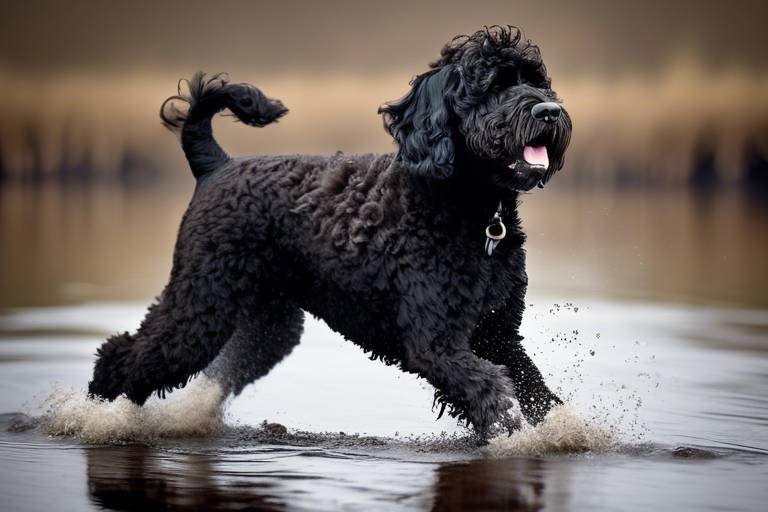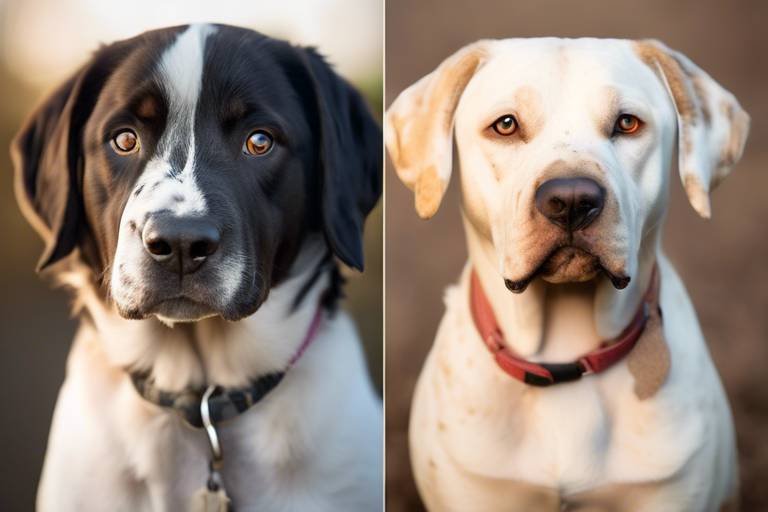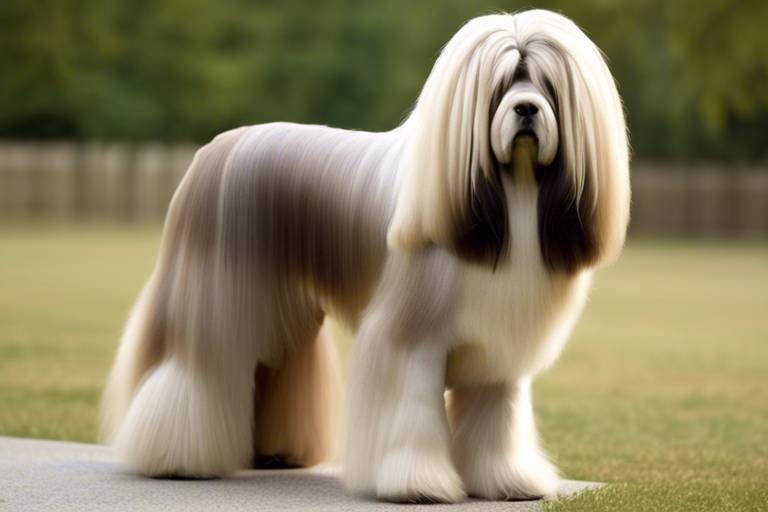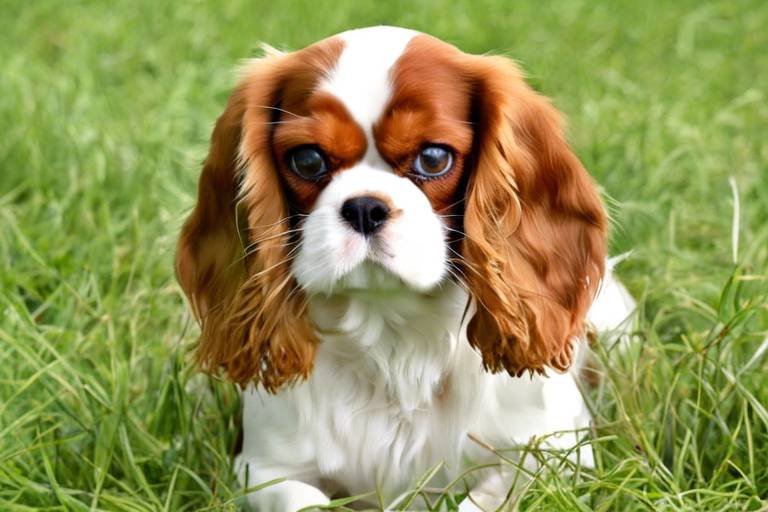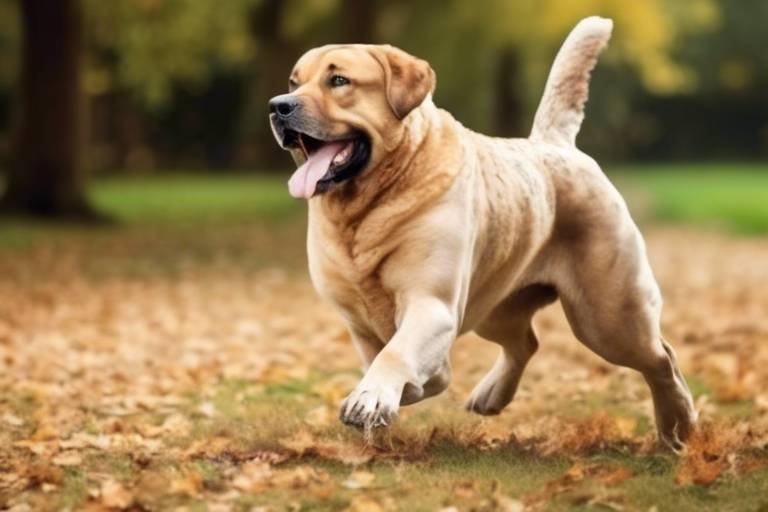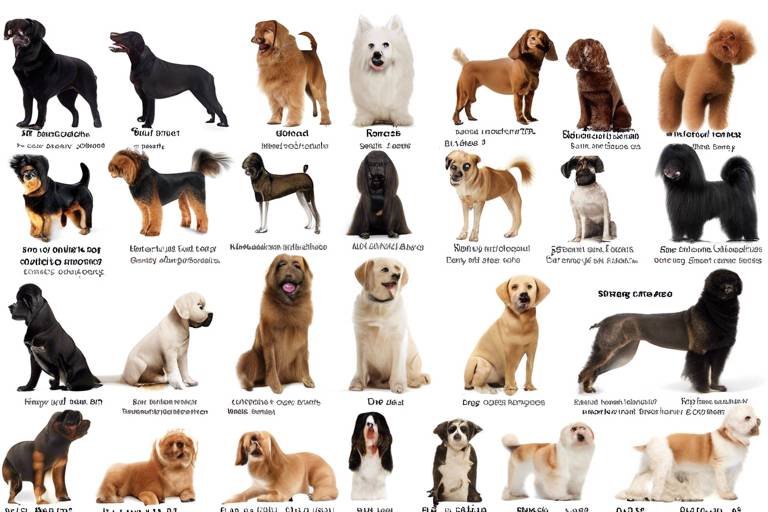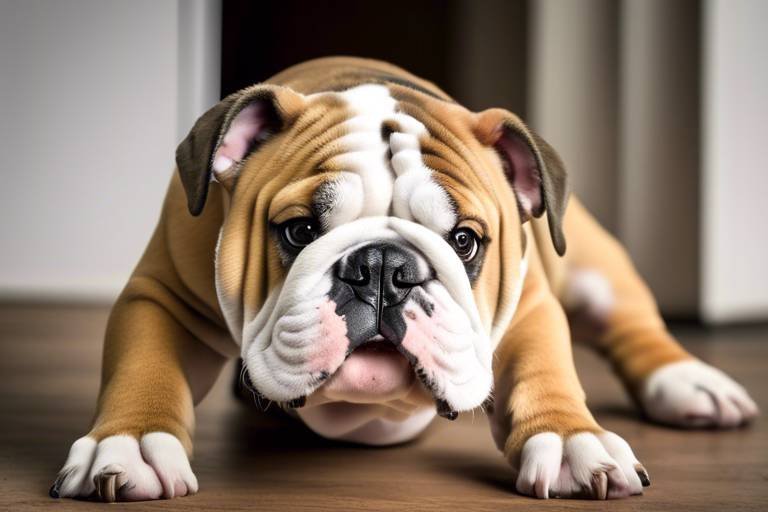Understanding the Traits of the American Bulldog
The American Bulldog is not just a dog; it's a **companion**, a **guardian**, and a **friend** all rolled into one. This breed has a rich history that dates back to the working dogs of the American South, where they were used for herding and guarding livestock. Their **muscular build** and **strong jaws** make them look intimidating, but beneath that tough exterior lies a heart full of loyalty and love. If you're considering bringing one of these amazing dogs into your home, it's essential to understand their distinctive characteristics, including their physical traits, temperament, health considerations, and overall suitability as family pets.
In this article, we will explore everything you need to know about the American Bulldog. We'll dive into their physical characteristics, such as their size, coat types, and unique features that make them stand out in a crowd. You'll also learn about their temperament and behavior, including their loyalty and protective nature, which can be both a blessing and a responsibility for potential owners. Furthermore, we will discuss socialization needs, training techniques, exercise requirements, health considerations, dietary needs, and life expectancy. By the end of this article, you'll have a comprehensive overview that will help you decide if the American Bulldog is the right fit for your family.
So, are you ready to discover why the American Bulldog might just be the perfect addition to your life? Let's jump right into their physical characteristics!
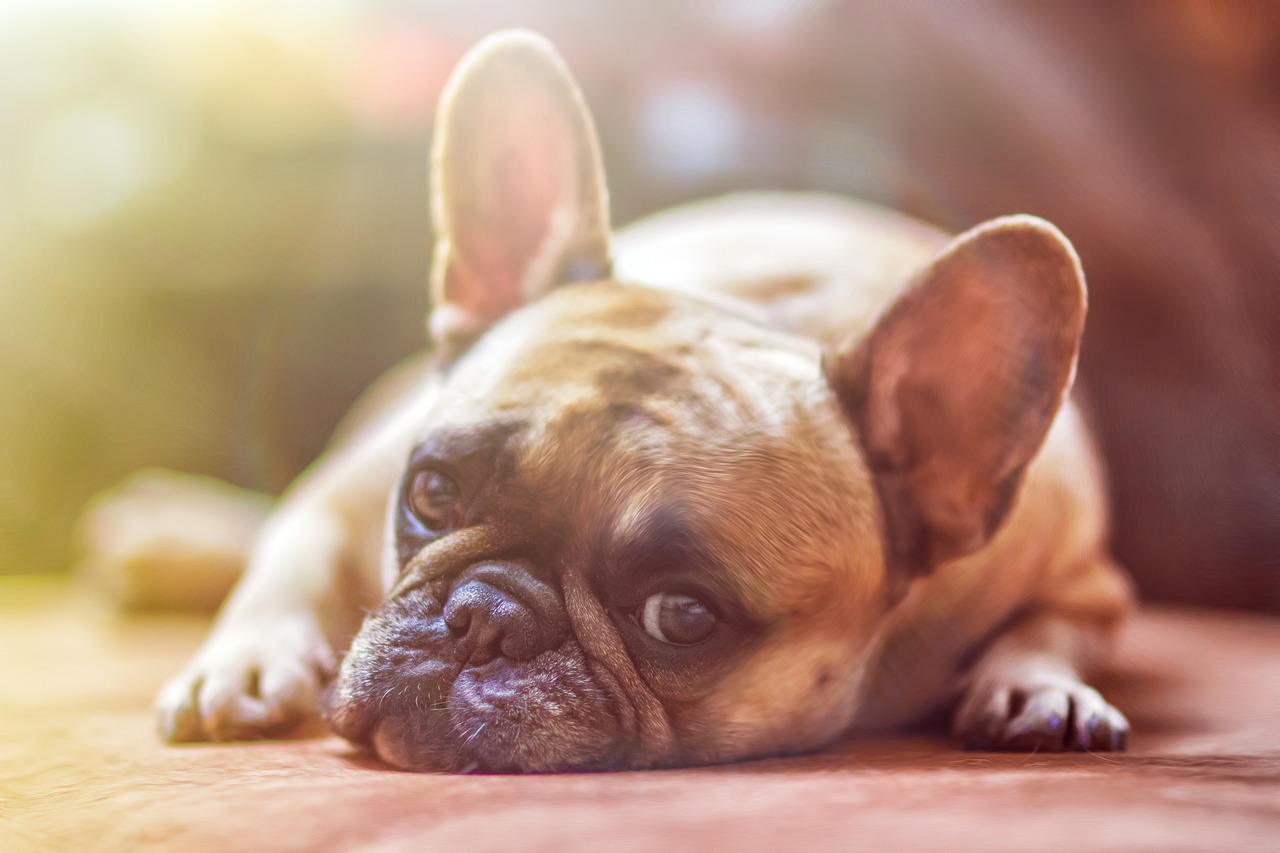
Physical Characteristics
The American Bulldog is a striking breed that commands attention with its powerful physique and distinctive features. Known for their robust and muscular build, these dogs typically weigh between 60 to 120 pounds and stand about 20 to 28 inches tall at the shoulder. Their broad, square-shaped heads are one of their most recognizable traits, complemented by strong jaws that give them a formidable appearance. This breed's body is well-proportioned, with a deep chest and strong legs, allowing for both strength and agility.
One of the fascinating aspects of the American Bulldog is its coat. These dogs have a short, smooth coat that comes in a variety of colors, including white, brindle, and fawn. Their coat is not only attractive but also easy to maintain, requiring minimal grooming to keep it looking its best. However, despite their short hair, it's essential to keep an eye on their skin, as some American Bulldogs can be prone to allergies that may lead to skin irritations.
In terms of their unique physical features, American Bulldogs often have a distinctive underbite, which adds to their character. Their expressive eyes, which can be brown or blue, give them a soulful look that many owners find endearing. Additionally, their ears can be cropped or left natural, depending on the owner's preference, but they typically sit high on their heads and can be quite expressive, often perking up when the dog is alert or excited.
Here’s a quick overview of the American Bulldog's physical characteristics:
| Trait | Description |
|---|---|
| Weight | 60 to 120 pounds |
| Height | 20 to 28 inches |
| Coat | Short, smooth, various colors |
| Head | Broad, square-shaped with strong jaws |
| Eyes | Brown or blue, expressive |
Overall, the American Bulldog's physical traits not only make them visually appealing but also contribute to their reputation as strong, loyal companions. Understanding these characteristics is crucial for anyone considering bringing one of these remarkable dogs into their home. Their combination of strength, agility, and unique looks makes them a breed like no other, embodying both beauty and brawn.
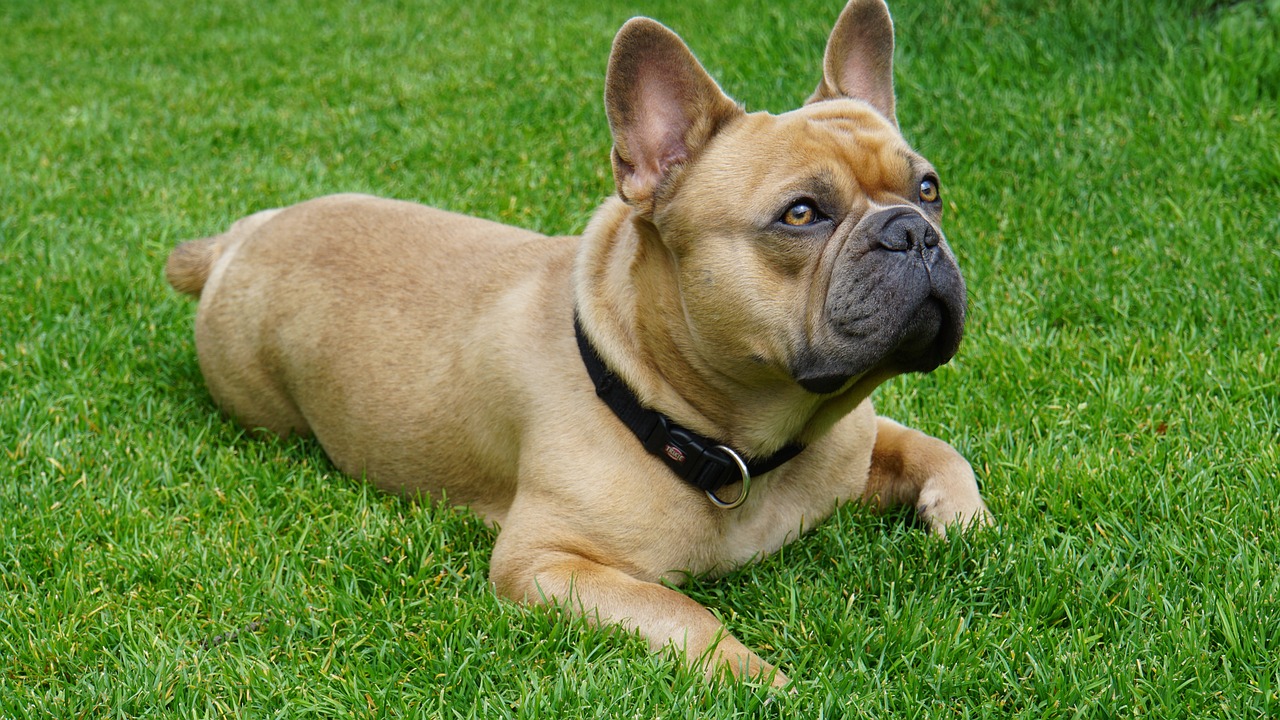
Temperament and Behavior
The American Bulldog is a breed that embodies strength and loyalty, making it a beloved choice for many dog enthusiasts. They are known for their protective nature, which makes them excellent guardians of the home. But it's not just their physical prowess that sets them apart; their temperament is equally captivating. These dogs are often described as affectionate and playful, thriving on human interaction and companionship. They possess a natural instinct to bond closely with their families, often forming strong attachments to their owners.
While American Bulldogs are generally friendly, they can exhibit a strong protective instinct towards their loved ones. This can sometimes be misinterpreted as aggression, especially if they perceive a threat. Therefore, understanding their behavior is crucial for potential owners. They tend to be confident and assertive, which can be a double-edged sword. On one hand, this confidence makes them great watchdogs; on the other, it requires firm and consistent training to ensure they are well-mannered and socialized.
One of the most important aspects of an American Bulldog's behavior is their socialization needs. Early exposure to various environments, people, and other animals is essential to help them develop into well-rounded adults. Without proper socialization, they may become overly protective or even fearful of unfamiliar situations. This breed thrives on positive experiences, so introducing them to new sights and sounds in a controlled manner can foster a sense of security and confidence.
Socialization is not just a one-time event; it's an ongoing process that should continue throughout their lives. Regularly taking your American Bulldog to parks, dog-friendly events, or even just on walks around the neighborhood can help them learn to interact positively with other dogs and people. Here are some effective strategies for socializing your American Bulldog:
- Start Early: Begin socialization during puppyhood, exposing them to various experiences.
- Positive Reinforcement: Reward your dog with treats and praise for calm behavior around new people and pets.
- Controlled Introductions: Gradually introduce them to new environments and situations to avoid overwhelming them.
Training is another crucial element in shaping the temperament of an American Bulldog. They are intelligent dogs, but their strong-willed nature means they require a trainer who is both patient and consistent. Utilizing positive reinforcement techniques can yield fantastic results. For instance, rewarding them for good behavior with treats or playtime can motivate them to learn and obey commands.
Training an American Bulldog can be an enjoyable experience if approached correctly. Here are some effective methods:
- Obedience Training: Start with basic commands like sit, stay, and come, gradually increasing complexity.
- Socialization Classes: Consider enrolling them in puppy classes to enhance their social skills.
- Consistency is Key: Use the same commands and signals to avoid confusion.
However, like any breed, American Bulldogs can face behavioral challenges. Common issues include stubbornness, separation anxiety, and occasional aggression towards other dogs. Addressing these challenges early on is crucial. For instance, if you notice signs of aggression, it’s essential to consult a professional trainer or behaviorist who understands the breed's nuances.
Another factor that significantly influences their temperament is their need for exercise. American Bulldogs are active and energetic dogs that require regular physical activity to maintain their mental and physical health. Without sufficient exercise, they may become bored, leading to destructive behavior. Engaging them in activities like fetch, agility training, or even long walks can help channel their energy positively.
In summary, the American Bulldog's temperament and behavior are shaped by a combination of their genetic predispositions and the environment in which they are raised. With the right training and socialization, these dogs can be wonderful companions, providing loyalty and love to their families.
Q: Are American Bulldogs good with children?
A: Yes, American Bulldogs are known for their affectionate nature and can be great companions for children when properly trained and socialized.
Q: Do they require a lot of exercise?
A: Absolutely! American Bulldogs need regular exercise to stay healthy and happy. Daily walks and playtime are essential.
Q: Are they aggressive?
A: While they can be protective, American Bulldogs are not inherently aggressive. Proper training and socialization can help them become well-adjusted pets.
Q: How do I train an American Bulldog?
A: Consistency and positive reinforcement are key. Start with basic commands and gradually introduce more complex training as they progress.
Socialization Needs
Socialization is not just a buzzword in the dog-training world; it's a crucial aspect of raising a well-adjusted American Bulldog. These dogs are known for their strong personalities and protective instincts, which means that without proper socialization, they might become overly cautious or even aggressive towards unfamiliar people and animals. Think of socialization as a way to equip your American Bulldog with a toolkit of experiences that help them navigate the world with confidence and ease.
Starting socialization early in your American Bulldog's life is essential. Ideally, you should begin this process when they are puppies, as their formative months are critical for developing positive associations with various environments, sounds, and people. However, it’s never too late to start! Adult dogs can also benefit from socialization, although it might take a bit more patience and effort.
Here are some effective strategies to ensure your American Bulldog becomes a well-rounded companion:
- Expose Them to Different Environments: Take your pup to parks, pet-friendly stores, and busy streets. The more varied experiences they have, the better they will adapt to different situations.
- Introduce Them to Various People: Encourage friends and family to meet your dog. This exposure helps your Bulldog understand that not everyone is a threat and that new people can be friendly.
- Encourage Interaction with Other Animals: Arrange playdates with other dogs or visit dog parks. Supervised interactions can help your Bulldog learn how to behave around different breeds and sizes.
Moreover, attending puppy classes or obedience training can be incredibly beneficial. These classes not only teach basic commands but also provide a structured environment for socialization with other dogs and people. Remember, the goal is to create positive experiences during these interactions, so always reward your American Bulldog with treats and praise when they behave well.
In essence, socialization is like giving your American Bulldog a passport to the world. It opens doors to new experiences and helps them become more adaptable and less fearful. Just as we learn from our experiences, dogs thrive on the interactions they have with their surroundings. So, make it a priority to socialize your American Bulldog, and you’ll be rewarded with a loyal, confident, and well-mannered companion.
Training Techniques
Training an American Bulldog can be a rewarding experience, but it requires a unique approach tailored to their strong-willed nature. These dogs are intelligent and eager to please, which makes them highly trainable when the right techniques are applied. One of the most effective methods is using positive reinforcement. This means rewarding your dog with treats, praise, or playtime whenever they exhibit desired behaviors. It’s like giving them a high-five every time they do something right, and who doesn’t love a good high-five?
Consistency is another key component in training. Just like you wouldn’t want to play a game with shifting rules, your American Bulldog needs to understand what is expected of them. Establishing a routine for commands and training sessions helps solidify their understanding. For example, if you’re teaching them to sit, use the same command and hand signal each time. This builds a strong foundation and helps them learn faster.
Moreover, socialization plays a vital role in the training process. Introducing your American Bulldog to various environments, people, and other animals can help them become well-adjusted and confident. Think of it as taking them on a grand adventure where they can meet new friends! This exposure can reduce anxiety and fearfulness, which are common in dogs that haven’t been properly socialized.
Here are some effective training techniques to consider:
- Clicker Training: This method uses a click sound to mark the desired behavior, followed by a reward. It helps clarify what you want your dog to do.
- Leash Training: Teaching your dog to walk nicely on a leash is essential. Use treats to encourage them to stay by your side.
- Basic Commands: Start with basic commands like sit, stay, and come. These commands are the building blocks for more advanced training.
In addition to these techniques, patience is crucial. Training isn’t a race; it’s more like a marathon. Some days will be easier than others, and that’s perfectly okay. If your dog doesn’t get it right away, don’t lose heart. Instead, take a step back, reassess your approach, and try again. Remember, every dog learns at their own pace, and your steady support will help them thrive.
Lastly, consider enrolling your American Bulldog in obedience classes. These classes provide structured training and allow your dog to learn in a social setting. Plus, it’s a fantastic way for you to connect with other dog owners and share experiences. Training doesn’t have to be a solo journey; it can be a fun adventure for both you and your furry friend!
Q: How long does it take to train an American Bulldog?
A: Training duration varies based on the individual dog and the consistency of the training. Generally, with regular practice, you can expect to see noticeable progress within a few weeks.
Q: Can American Bulldogs be aggressive?
A: Like any breed, American Bulldogs can exhibit aggression if not properly trained and socialized. Early socialization and consistent training are key to ensuring they develop a friendly disposition.
Q: What age should I start training my American Bulldog?
A: You can start training your American Bulldog as early as eight weeks old. Early training helps establish good habits and social skills from a young age.
Q: Are American Bulldogs easy to train?
A: They can be easy to train due to their intelligence and eagerness to please, but their stubbornness may pose challenges. Using positive reinforcement and being patient will yield the best results.
Behavioral Challenges
Like any breed, the American Bulldog is not without its . These dogs are known for their strength and intelligence, which can sometimes lead to stubbornness if not properly managed. One of the most common issues faced by owners is aggression towards other dogs. This stems from their natural protective instincts. If not socialized adequately from a young age, they may exhibit defensive behavior when encountering unfamiliar animals.
Another challenge is their tendency to become overly attached to their owners, which can lead to separation anxiety. This breed thrives on companionship and can struggle when left alone for extended periods. Signs of this anxiety can include excessive barking, chewing, or even attempts to escape. It's essential to be aware of this trait and take steps to mitigate it, such as gradually increasing the time they spend alone and providing engaging toys to keep them occupied.
Additionally, American Bulldogs can be quite dominant if not trained properly. This can manifest as leash pulling, jumping on people, or refusing to obey commands. Consistent training and clear boundaries are crucial in preventing these behaviors. Positive reinforcement techniques work best with this breed, rewarding desirable behaviors while gently correcting undesirable ones.
To help owners navigate these challenges, it's important to recognize some common behavioral issues:
- Excessive barking: This can be a sign of boredom or anxiety.
- Destructive chewing: Often a result of separation anxiety or lack of exercise.
- Jumping on people: A sign of excitement but can be problematic if not managed.
Addressing these behavioral challenges requires patience and dedication. Engaging in regular training sessions, providing plenty of exercise, and ensuring proper socialization from a young age can significantly reduce these issues. It's also beneficial to seek the help of a professional dog trainer if challenges persist, as they can provide tailored strategies to help your American Bulldog become a well-adjusted member of the family.
Q: Are American Bulldogs good with children?
A: Yes, American Bulldogs can be excellent family pets and are generally good with children when properly socialized and trained. They are known for their affectionate nature.
Q: Do American Bulldogs require a lot of exercise?
A: Absolutely! They are an active breed and need regular exercise to stay healthy and happy. Daily walks, playtime, and mental stimulation are essential.
Q: How can I prevent my American Bulldog from being aggressive?
A: Proper socialization from a young age is key. Expose them to various environments, people, and other animals to help them become well-adjusted.
Q: What should I do if my American Bulldog has separation anxiety?
A: Gradually increase the time they spend alone, provide engaging toys, and consider crate training to help them feel secure when you’re not home.
Exercise Requirements
American Bulldogs are not just your average couch potatoes; they are active and energetic dogs that thrive on physical activity. These dogs were originally bred for working purposes, which means they have a lot of stamina and strength to burn. To keep your American Bulldog healthy and happy, it’s essential to incorporate a variety of exercises into their daily routine. Think of it as keeping a sports car in top condition; you wouldn’t just let it sit in the garage, right?
Daily exercise is crucial for American Bulldogs to maintain their physical health and mental well-being. Ideally, they should get at least 1 to 2 hours of exercise each day. This can include brisk walks, playtime in the yard, or engaging in dog sports. Not only does this help prevent obesity, but it also curbs behavioral issues that can arise from boredom or pent-up energy. Imagine a child cooped up inside all day—what do you think would happen? The same applies to your furry friend!
Here are some effective ways to ensure your American Bulldog gets the exercise they need:
- Daily Walks: Aim for at least two walks a day. Not only does this provide physical exercise, but it also offers mental stimulation as they explore their environment.
- Playtime: Engage in games like fetch or tug-of-war. These activities not only strengthen your bond but also provide an excellent workout.
- Dog Sports: Consider enrolling your Bulldog in agility training or obedience classes. These activities challenge them both physically and mentally.
- Swimming: If your dog enjoys water, swimming can be a fantastic low-impact exercise that’s easy on their joints.
It’s essential to remember that American Bulldogs can be prone to certain health issues, such as hip dysplasia and breathing problems, especially in hot weather. Always monitor your dog during exercise sessions and provide plenty of water to keep them hydrated. If they show signs of fatigue or overheating, it's crucial to let them rest. Just like us, dogs need to listen to their bodies!
In conclusion, keeping your American Bulldog active is vital for their overall health. By incorporating a mix of physical activities into their daily routine, you can ensure they remain a happy and well-adjusted member of your family. After all, a tired dog is a happy dog!
1. How much exercise does an American Bulldog need daily?
American Bulldogs typically require 1 to 2 hours of exercise each day to stay healthy and happy.
2. Can American Bulldogs swim?
Yes, many American Bulldogs enjoy swimming, and it can be a great low-impact exercise for them.
3. What types of activities are best for keeping my American Bulldog active?
Daily walks, playtime, dog sports, and swimming are all excellent ways to keep your American Bulldog engaged and fit.
4. How can I tell if my American Bulldog is getting enough exercise?
If your dog is calm and relaxed at home, has a healthy weight, and shows no signs of boredom or destructive behavior, they are likely getting enough exercise.
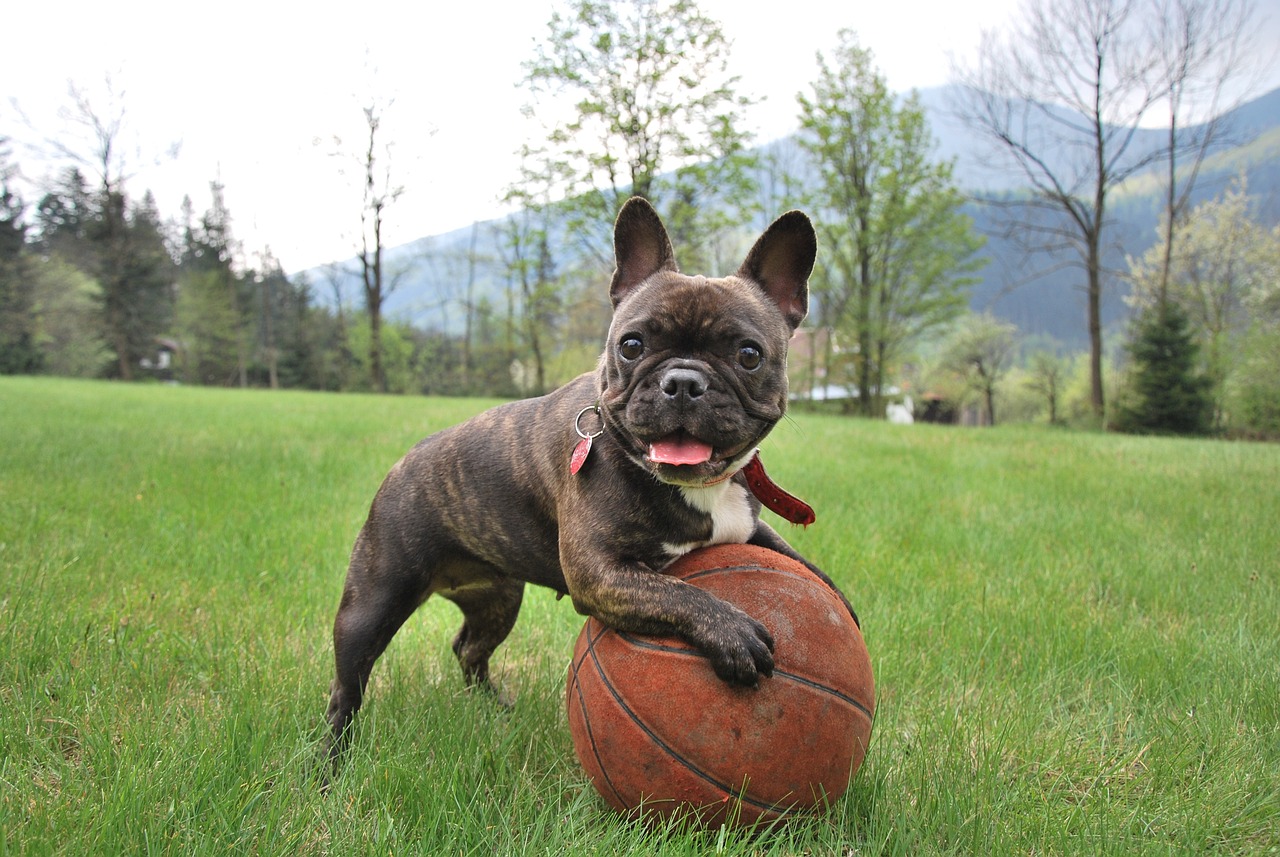
Health Considerations
When it comes to the American Bulldog, understanding their health considerations is paramount for any potential owner. Just like any other breed, American Bulldogs are prone to certain health issues that can impact their quality of life. Being aware of these conditions enables owners to take proactive measures, ensuring their furry friends live long, happy lives. Among the most common health concerns are hip dysplasia, skin allergies, and certain heart conditions.
Hip dysplasia is a genetic condition that affects the hip joint, leading to arthritis and discomfort as the dog ages. Regular veterinary check-ups can help identify this issue early on, allowing for timely intervention. Skin allergies are another prevalent issue, often triggered by environmental factors or food. Keeping a close eye on your Bulldog's skin and coat can help catch any problems before they escalate.
Moreover, American Bulldogs can be susceptible to heart conditions such as cardiomyopathy, which affects the heart muscle and can lead to serious complications if left untreated. Regular vet visits, a balanced diet, and appropriate exercise can significantly reduce the risk of these health issues.
It's also essential to consider the breed's unique physical traits when discussing health. Their short snouts can lead to brachycephalic obstructive airway syndrome (BOAS), which can cause breathing difficulties. This condition makes it crucial for owners to monitor their Bulldog's breathing, especially during hot weather or strenuous activities.
To give you a clearer picture of the health concerns associated with American Bulldogs, here's a quick overview:
| Health Concern | Description | Prevention/Treatment |
|---|---|---|
| Hip Dysplasia | A genetic condition affecting the hip joint, leading to arthritis. | Regular vet check-ups and maintaining a healthy weight. |
| Skin Allergies | Allergic reactions to environmental factors or food. | Monitor skin condition and consult a vet for appropriate treatments. |
| Heart Conditions | Issues like cardiomyopathy that affect heart function. | Regular vet visits and a balanced diet. |
| Brachycephalic Issues | Breathing difficulties due to short snouts. | Avoid strenuous exercise in hot weather and consult a vet if breathing issues arise. |
In addition to these health concerns, it is essential to maintain a balanced diet tailored to the specific needs of American Bulldogs. These dogs thrive on high-quality dog food that provides the necessary nutrients to support their active lifestyle while also addressing any breed-specific health issues. Regular exercise is another vital component of their overall health, helping to maintain a healthy weight and prevent obesity-related problems.
Finally, understanding the life expectancy of American Bulldogs can help owners prepare for their long-term care. On average, these dogs live between 10 to 16 years, depending on their overall health and lifestyle. Factors such as genetics, diet, exercise, and regular veterinary care play significant roles in influencing their lifespan. By being proactive and attentive to their health needs, owners can ensure their American Bulldogs lead fulfilling and healthy lives.
- What are the common health issues in American Bulldogs? American Bulldogs are prone to hip dysplasia, skin allergies, heart conditions, and breathing issues due to their brachycephalic nature.
- How can I prevent health problems in my American Bulldog? Regular veterinary check-ups, a balanced diet, and consistent exercise are key to preventing health issues.
- What should I feed my American Bulldog? A high-quality dog food that meets their nutritional needs is essential, along with regular monitoring of their weight.
- What is the average lifespan of an American Bulldog? The average lifespan is between 10 to 16 years, influenced by genetics and overall care.
Dietary Needs
The dietary needs of the American Bulldog are as robust as their muscular build. To keep your furry friend healthy, it's essential to provide a balanced diet that meets their nutritional requirements. American Bulldogs thrive on high-quality dog food that is rich in protein, as this breed is known for its strength and energy levels. Look for food that lists meat as the first ingredient, ensuring that they receive the necessary amino acids for muscle maintenance and growth.
When selecting a diet for your American Bulldog, consider their age, weight, and activity level. Puppies, adults, and seniors all have different nutritional requirements. For instance, puppies need more calories and nutrients for growth, while older dogs may require fewer calories to prevent obesity. It's crucial to consult your veterinarian to determine the best feeding plan tailored to your dog's specific needs.
| Life Stage | Recommended Daily Intake | Key Nutrients |
|---|---|---|
| Puppy | 3-4 meals per day | High protein, DHA for brain development |
| Adult | 2 meals per day | Protein, healthy fats, vitamins, and minerals |
| Senior | 2 meals per day | Lower calories, joint support supplements |
In addition to choosing the right food, portion control is vital. Overfeeding can lead to obesity, which is a common issue in American Bulldogs due to their love for food and less active lifestyle. Always measure out their food according to the guidelines provided on the dog food packaging or as recommended by your vet.
Furthermore, it's essential to keep your American Bulldog hydrated. Fresh water should always be available, especially after exercise. Some owners opt to add wet food to their dog's diet for variety and hydration, but be mindful of the calorie count.
Lastly, while it’s tempting to share our meals with our pets, be cautious about human food. Certain foods, like chocolate, onions, and grapes, are toxic to dogs. Instead, consider healthy treats like carrots or apples in moderation. By paying close attention to their dietary needs, you can ensure your American Bulldog remains healthy, happy, and full of life.
- What is the best food for an American Bulldog? Look for high-quality dog food with meat as the first ingredient, tailored to their life stage.
- How often should I feed my American Bulldog? Puppies typically require 3-4 meals a day, while adults and seniors should be fed twice a day.
- Can American Bulldogs eat human food? Some human foods are safe in moderation, but avoid toxic foods such as chocolate and onions.
- How do I know if my American Bulldog is overweight? Consult your vet for guidance, but a general rule is to feel their ribs without excess fat covering.
Life Expectancy
The life expectancy of an American Bulldog typically ranges from 10 to 16 years. This range can vary significantly based on several factors, including genetics, diet, exercise, and overall health care. It's fascinating to think about how much love and companionship these dogs can offer during their lifetime. However, just like with any breed, certain health considerations can impact their longevity.
One of the most significant factors influencing an American Bulldog's life expectancy is their genetic background. Dogs that come from responsible breeders who prioritize health testing tend to have fewer hereditary issues. On the other hand, those that come from less reputable sources may face a higher risk of genetic disorders, which can shorten their lifespan. Regular veterinary check-ups and vaccinations are crucial in catching potential health issues early on, which can make a world of difference.
Another important aspect to consider is diet. A well-balanced diet tailored to meet the specific needs of an American Bulldog can greatly influence their health and longevity. High-quality dog food that includes essential nutrients, vitamins, and minerals will support their overall well-being. Additionally, maintaining a healthy weight is vital, as obesity can lead to various health problems that might shorten their lifespan.
Exercise is equally important in ensuring a long and healthy life for your American Bulldog. These dogs are energetic and require regular physical activity to keep them fit and mentally stimulated. Engaging in daily walks, playtime, and even dog sports can help maintain their physical health and prevent obesity, which is a common concern among this breed.
To summarize, while the average life expectancy of an American Bulldog is between 10 to 16 years, factors such as genetics, diet, exercise, and regular veterinary care play a crucial role in determining how long they will be part of your family. By being proactive about their health and well-being, you can help ensure that your beloved pet enjoys a long, happy, and fulfilling life.
- What is the average lifespan of an American Bulldog?
The average lifespan is typically between 10 to 16 years. - How can I improve my American Bulldog's lifespan?
Providing a balanced diet, regular exercise, and routine veterinary care can significantly enhance their longevity. - Are there specific health issues I should be aware of?
Yes, American Bulldogs can be prone to certain health issues such as hip dysplasia, skin allergies, and obesity. - What type of diet is best for an American Bulldog?
A high-quality, balanced diet that meets their nutritional needs is essential. Consult your vet for specific recommendations.

Suitability as Family Pets
When it comes to choosing a family pet, the American Bulldog often emerges as a top contender. These dogs are not just about their impressive physical presence; they are also known for their loving nature and strong bonds with their families. Imagine having a furry friend that is not only a guardian but also a playmate for your children. This breed is particularly known for its affectionate demeanor, making it a great companion for families of all sizes.
One of the standout traits of American Bulldogs is their protectiveness. They have a natural instinct to safeguard their loved ones, which can be a comforting quality for families. This protective nature doesn't mean they are aggressive; rather, they are known to be gentle giants when properly socialized. They thrive in environments where they can interact with children and other pets, showcasing their friendly disposition. However, it’s essential to remember that early socialization is key to ensuring they develop into well-adjusted adults.
Moreover, American Bulldogs are incredibly loyal. They form strong attachments to their family members and often seek to be included in family activities. Whether it’s a game of fetch in the backyard or snuggling on the couch during a movie night, these dogs love being part of the action. Their loyalty also means they can be quite sensitive to their owner's emotions, often providing comfort during tough times.
However, like any breed, American Bulldogs require proper training and socialization to ensure they are well-mannered members of the family. It’s crucial to establish boundaries and teach them basic commands early on. This not only helps in managing their behavior but also strengthens the bond between the dog and its family. Consistent training sessions can be an enjoyable experience for both the dog and the owner, reinforcing the idea that learning can be fun!
In terms of compatibility with children, American Bulldogs generally do well, especially when raised with them. They are known to be patient and tolerant, making them suitable for households with kids. However, supervision is always recommended, as their size and strength can sometimes lead to unintentional accidents during playtime. It's important to teach children how to interact safely with their canine companions, fostering a respectful relationship.
When considering an American Bulldog as a family pet, it’s also important to assess your lifestyle. These dogs are active and require regular exercise to keep them happy and healthy. Families that enjoy outdoor activities will find that American Bulldogs make excellent companions on hikes, runs, or even trips to the dog park. Their playful energy can be a great way to encourage kids to be active, promoting a healthy lifestyle for the entire family.
In conclusion, American Bulldogs can make wonderful family pets for those who are willing to commit time and effort to their training and socialization. With their loyal and protective nature, they can provide both companionship and security. If you’re considering adding an American Bulldog to your family, ensure that you’re ready for the responsibilities that come with it. With the right care, these dogs can fill your home with joy and love, becoming a cherished part of your family.
- Are American Bulldogs good with children?
Yes, American Bulldogs are generally good with children, especially when raised with them. They are known to be patient and tolerant, making them suitable family pets. - How much exercise do American Bulldogs need?
American Bulldogs require regular exercise to stay healthy and happy. Daily walks, playtime, and activities like fetch are ideal for this energetic breed. - Do American Bulldogs have any health issues?
Like all breeds, American Bulldogs can be prone to certain health issues. Regular veterinary check-ups and a balanced diet can help mitigate these risks. - How should I train my American Bulldog?
Consistency and positive reinforcement are key when training an American Bulldog. Early socialization and obedience training will help them become well-adjusted adults.
Frequently Asked Questions
- What are the physical characteristics of an American Bulldog?
The American Bulldog is a robust and muscular breed, typically weighing between 60 to 120 pounds. They have a broad head, strong jaws, and a short coat that can come in various colors, including white, brindle, and fawn. Their powerful build gives them a distinctive appearance that many find appealing.
- How is the temperament of an American Bulldog?
American Bulldogs are known for their loyalty and protective nature. They are often affectionate with their families and can be great companions. However, they may exhibit strong-willed behavior, which requires consistent training and socialization to ensure they are well-adjusted and friendly.
- What are the socialization needs of American Bulldogs?
Socialization is crucial for American Bulldogs to help them become well-rounded pets. Introducing them to various environments, people, and other animals from a young age can significantly improve their behavior. Regular interactions help them develop confidence and reduce any potential anxiety.
- What training techniques are best for American Bulldogs?
Training an American Bulldog should focus on positive reinforcement techniques. They respond well to treats, praise, and playtime. Consistency is key, so establishing a routine and using clear commands can help them learn effectively. Patience is essential, as they may take time to grasp certain commands.
- What are common behavioral challenges faced by American Bulldogs?
American Bulldogs can face behavioral challenges such as stubbornness or aggression if not properly trained. Issues like excessive barking or chewing can also arise. Addressing these behaviors early with proper training and socialization can lead to a more balanced and happy dog.
- How much exercise do American Bulldogs need?
These dogs are energetic and require regular exercise to stay healthy and happy. Daily walks, playtime, and activities like fetch or agility training are great ways to keep them active. Aim for at least 60 minutes of exercise each day to meet their energy needs.
- What health considerations should I be aware of?
American Bulldogs can be prone to certain health issues, such as hip dysplasia, skin allergies, and obesity. Regular veterinary check-ups and a healthy diet are essential for maintaining their overall health. Being aware of these conditions can help in early detection and treatment.
- What dietary needs do American Bulldogs have?
A balanced diet is vital for the health of an American Bulldog. High-quality dog food that meets their nutritional requirements is recommended. It's important to monitor their weight and adjust their diet accordingly to prevent obesity, which can lead to other health issues.
- What is the life expectancy of an American Bulldog?
The average life expectancy of an American Bulldog ranges from 10 to 16 years. Factors like genetics, diet, and regular veterinary care can influence their lifespan. Providing a healthy lifestyle and routine check-ups can help ensure they live a long and happy life.
- Are American Bulldogs suitable as family pets?
Yes, American Bulldogs can make excellent family pets when properly trained and socialized. They tend to be good with children and can coexist well with other pets if introduced correctly. Their protective nature makes them great companions for families looking for a loyal and loving dog.


